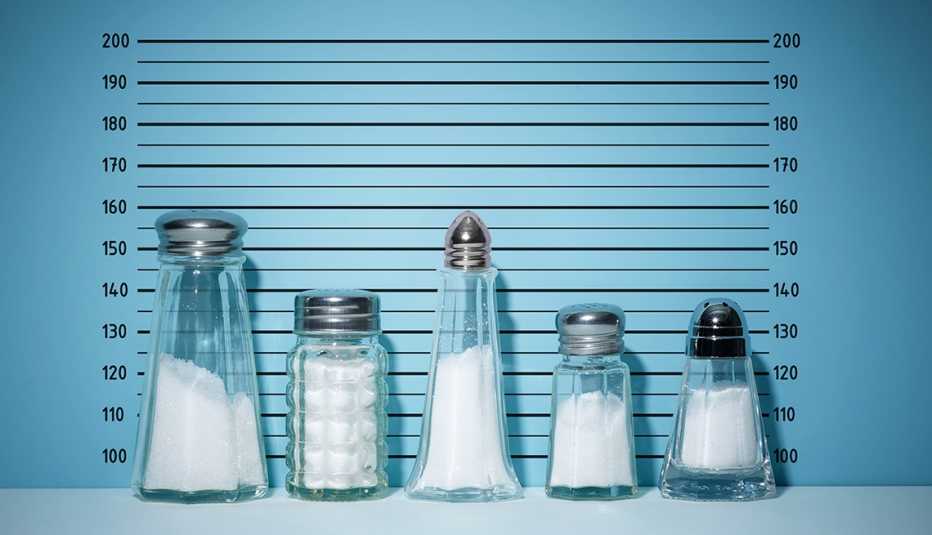AARP Hearing Center
Remember when we thought fat was the No. 1 dietary villain and felt virtuous eating low-fat cookies loaded with sugar? Not anymore, thanks to the growing recognition that the sweet stuff increases our risk of developing a range of serious health problems. In fact, research has linked an excessive intake of sugar with an increased risk of developing high blood pressure, type 2 diabetes, cardiovascular disease, chronic inflammation, nonalcoholic fatty liver disease and an increased risk of certain forms of cancer.
At the root of many of these health problems is how too much sugar wreaks havoc with blood sugar levels and promotes body fat storage, says David Katz, director of the Yale University Prevention Research Center and author of Disease-Proof: The Remarkable Truth About What Makes Us Well. “Sugar contributes to the excess calories that contribute to obesity, and sugar is used expressly to make foods, even foods that are not overtly sweet, hyper-palatable.” This, he says, “contributes disproportionately to overeating in general.”
It turns out that our collective sugar intake really is out of control. From 1977 to 2010, the average adult’s consumption of added sugars increased by more than 30 percent in the U.S., according to the Obesity Society. These days, the average person downs, per year, an estimated 152 pounds of sugar; more, that is, than some individuals' entire body weight.
How did we get here? “We are born with a taste for sugar because that favors survival — the craving helps ensure that newborns favor breast milk,” Katz says. While a penchant for sweet flavors may have begun as a survival mechanism, it has long since led us astray. But it’s not the sugar in fruits, vegetables, dairy products and other whole foods that’s the problem, according to experts. It’s the stuff that’s added to processed foods, from sodas, fruit drinks and fancy coffees to flavored yogurts, cereals, cookies, cakes and candy. Sugar is even added to foods you might not expect to find it in, such as ketchup, salad dressings, pasta sauce, peanut butter and soups. Besides being a source of considerable calories that have no nutritional value (1 teaspoon of sugar has 16 calories), consuming processed sugars just makes you crave more.
Once food manufacturers realized they could ignite the reward centers of our brains by adding sugar to processed foods, they started adding it to everything so you’d keep eating, says Pamela Peeke, an assistant professor of medicine at the University of Maryland and author of The Hunger Fix: The Three-Stage Detox and Recovery Plan for Overeating and Food Addiction. Besides making that breakfast bar or frozen entree incredibly appealing while you’re eating it, the addition of processed sugar stimulates your appetite and overrides your body’s natural satiety-regulating system in a way that eating handfuls of snap peas or apple slices doesn’t.
“Consuming processed sugar has been found to cause a major rush of dopamine, which is the pleasure neurotransmitter,” Peeke explains. Having the reward response in your brain zoom off the charts this way makes you want to keep eating sugar to maintain that "high." Eventually, however, your brain becomes somewhat desensitized to sugar so you need more of it to achieve that same reward feeling. In fact, researchers at Princeton University found that eating sugar triggers the release of opioids and dopamine in the brain, just like potentially addictive drugs do.
How Much Is Too Much?
The 2015 to 2020 Dietary Guidelines for Americans recommend consuming less than 10 percent of your daily calories from added sugars. That means a max of 180 calories (or 45 grams) from added sugars if you consume 1,800 calories per day; foods that contain sugar naturally aren’t included in this guideline. The American Heart Association advises limiting the amount of added sugars you consume to 50 percent of your daily discretionary calories, which total 100 calories per day for women, 150 for men.
But kicking the habit isn’t necessarily about counting every gram of sugar as much as it is about eating in a way that feels satisfying without lots of the white stuff. Following some of the smart tips below can help you put your taste buds through rehab so you simply stop craving sugar so much. “As you cut out superfluous sugar, your taste buds will become more sensitive to it,” Katz notes. Once that happens, foods that used to be appealing may come to taste sickly sweet to you, which is likely to benefit your health and waistline.
Eat regularly. Sometimes hunger can make you crave sugar, so it’s important to “nourish your body with whole foods every four hours,” says Lona Sandon, an assistant professor of clinical nutrition at UT Southwestern in Dallas. In particular, make sure you consume plenty of protein and healthy fats, from things like eggs, fish, lean meats, nuts or avocado, which will provide lasting satiety, reduce cravings and lead to a slow, sustained rise in blood sugar and steady energy. And remember: Whole foods such as fruits, vegetables and whole grains come by their sugar naturally and also contain other important nutrients, Sandon notes.


































































